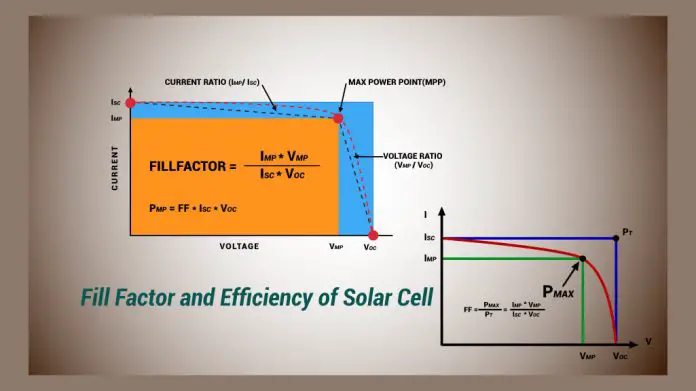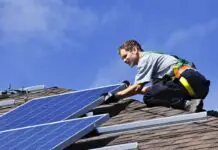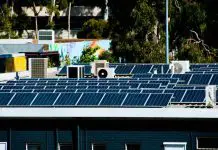Is it tough to understand the fill factor of solar cells? And is it essential to know the Fill factor and Efficiency of a solar cell?
The answer is: No!! It isn’t hard, but it’s imperative to understand if you want to know how tot improve a solar cell’s efficiency??
Understanding the Fill Factor and Optimizations of Solar Cell Efficiency isn’t inflexible enough if you have enough time to read this piece of article. This article is full of the Fill factor and Efficiency of the solar cell.
With the continued rise in global warming and shrink in the fossil fuel mix, the purpose of alternative energy resources is becoming more and more pressing.
Throughout this article, I have emphasized the fill factor of solar cell, how they behave, impact, and the factors affecting solar cells Efficiency.
A solar photovoltaic(PV) cell can convert light energy to electric energy in certain semiconductor materials such as Silicon, Gallium, etc.
Realizing a more significant potential from only a fraction of solar irradiation necessitates examining the solar PV module performance parameters. The fill factor (FF), open-circuit voltage (VOC), and short-circuit current (ISC) are three significant vital parameters.
Maximizing all three parameters is essential for an efficient operation.
- The fill factor (FF).
- Open-circuit voltage (VOC).
- Short-circuit current (ISC).
A sound understanding of the technicalities of the factors is essential for cost-effective performance.
Let’s get started with the Fill factor and Efficiency of solar cells and their definition and formula and assess the limiting nature in different circumstances.
Let’s deep dive!!
Contents
- What is the meaning of Fill factor and efficiency of solar cell?
- The Fill Factor of Solar Cells:
- Difference between the Efficiency and the Fill Factor in a solar cell :
- Factors Affecting the Efficiency of a PV Cell:
- How to Improve the Efficiency of a Solar Cell:
- Why Can’t Solar Cells Reach 100 Percent Efficiency :
- Final thought of Fill factor of solar cell :
What is the meaning of Fill factor and efficiency of solar cell?
Fill factor meaning with formula:
The Fill Factor (FF) is typically a measure of the Efficiency of a solar PV module.
FF is the ratio of maximum power (Pmax) to the product of VOC & ISC, i.e.:

It is the ratio of the actual highest achievable power.
Here,
- Open Circuit Voltage (VOC): The highest voltage that a solar PV panel can generate (under standard testing conditions). As there is no load connected on the output circuit, no current produces.
- Short Circuit Current (ISC): The highest current solar PV panel can generate (under standard testing conditions). As the panel’s wires are directly connected, i.e., short-circuited, no voltage produces.
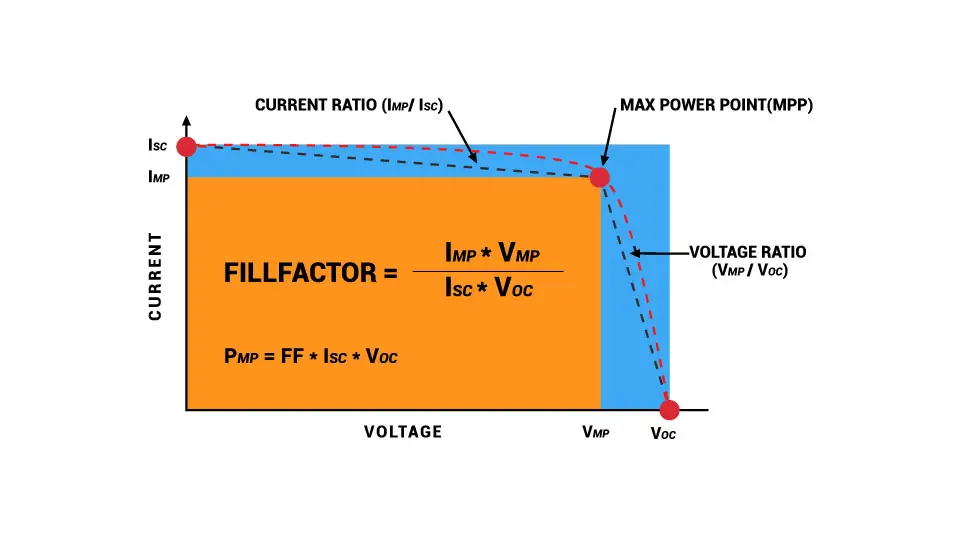
The maximum power (Pmax) occurs when the current and voltage combinations result in the most significant power.
It neither occurs at open circuit conditions (VOC) nor short circuit conditions (ISC).
As at ISC, the voltage is ideally zero, and at VOC, the current in the cell is too considered to be ideally zero.
Hence, Pmax does not occur at max current; rather, it befalls at a particular current (IMPP), which is less than ISC.
Similarly, Pmax does not occur at max voltage; rather, it befalls at a particular voltage (VMPP), which is less than VOC.
Thus,
Pmax = VMPP x IMPP
Here, VMPP & IMPP is the Voltage and Current respectively at the Maximum Power Point on the current (I) vs. voltage (V) curve (i.e., IV curve).
The Fill Factor of Solar Cells:
- The Fill factor (FF) of a solar PV module is usually about 80% for silicon cells.
- And solar cells made from GaAs can give a maximum FF of 89%.
Efficiency of Solar Cell:
The Efficiency of a solar cell is a determination of a solar panel’s power-producing capacity.
It is the ratio of the highest power to the input power.

Here, Pmax is the highest power that a solar PV panel can generate under standard testing conditions
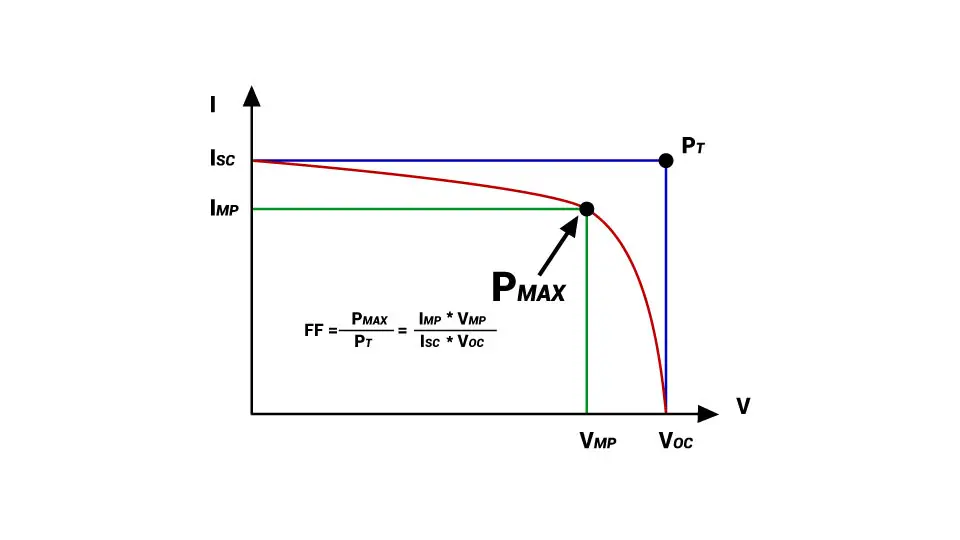
And, Pin is the solar radiation i.e., the radiant energy emitted from the sun.
Generally, there are three varieties of solar panels, namely,
- Monocrystalline,
- Polycrystalline, and
- Thin-film.
The conversion efficiency of the three solar types varies due to their construction material and techniques.
|
Solar Type |
Construction |
Efficiency (%)) |
|
i. Monocrystalline |
Pure Silicon |
20 |
|
ii. Polycrystalline |
Fragments of the Silicon Crystal Melted Together |
15 – 17 |
|
iii. Thin-Film |
Cadmium Telluride (CdTe), Amorphous Silicon (a-Si), and Copper Indium Gallium Selenide (CIGS) or with any such mix from a variety of materials |
11 (approximately) |
- Monocrystalline Solar Panels: Their manufacturing material is pure silicon. They are the most expensive and most efficient as well. Monocrystalline solar panels can reach over 20 % efficiency.
- Polycrystalline Solar Panels: Their construction technique is slightly different from the other even though the manufacturing material is silicon. Fragments of the silicon crystal melted together to manufacture Polycrystalline Solar Panels.
The purpose of developing a polycrystalline solar panel was to reduce the cost, yet it became less effective too.
It can generally reach 15 – 17 % efficiency.
This efficiency gap between the above two panels may reduce soon with the ever-improving technology
- Thin-Film Solar Panels: The thin-film panel’s unique characteristic is that it often employs different materials(other than silicon) in the manufacturing process.
A thin-film solar panel can be made from cadmium telluride (CdTe), amorphous silicon (a-Si), and Copper Indium Gallium Selenide (CIGS) or with any such mix from a variety of materials.
The Efficiency of a thin-film solar panel is the minimum (approximately 11%) among the three types of solar panels.
Difference between the Efficiency and the Fill Factor in a solar cell :
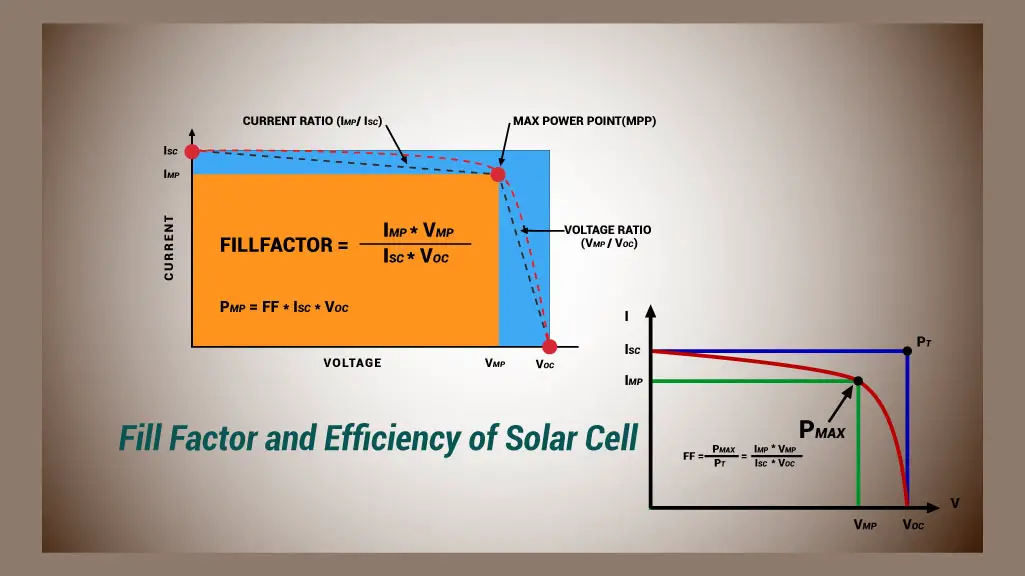
|
Efficiency
|
Fill Factor |
|
i. It is the ratio of the highest power that a solar PV panel can generate under standard testing conditions to the input power
|
i. It is the ratio of maximum power to the theoretical power. |
|
ii.
|
ii.
|
|
iii. You can maximize a solar PV panel’s Efficiency through an increased Fill Factor (FF), VOC, and ISC.
|
iii. The maximum achievable power (theoretical) depends on several factors, such as the silicon type employed to build solar PV modules. Any deviation from the anticipated value in Fill Factor could be evidence of the module being faulty. |
Factors Affecting the Efficiency of a PV Cell:
The profound dependency on fossil fuels (coal, oil, natural gas, etc.) to generate electricity has led us to quite an uncertain future.
We can fulfill the ever-increasing power requirement with an alternative energy source with attributes such as resourcefulness, durability, etc.
An all-out inspection of the factors that may contribute to the PV cell’s lack of Efficiency is now increasingly relevant.
Let’s dig deep into the impacts of such factors-
1. Fill Factor: In between two solar PV panels, the one with a lower magnitude of Fill Factor will accomplish less Efficiency than the other one.
2. Solar Spectra and Temperature: Solar spectra and temperature affect the Efficiency of a PV panel.
A solar PV panel generates electricity by employing rays of the sunlight. However, it decreases Efficiency with increasing irradiance.
Suppose a solar PV panel’s temperature goes beyond the limit of an optimum or operating amount of temperature.
In that case, the overheated solar PV panel causes a drop in the VOC and ISC, followed by a decrease in Efficiency.

3. The Light Intensity: The light intensity affects the fill factor (FF) significantly. Hence, Efficiency is affected by the variation of illumination intensity.
- The FF increases for irradiation less than 500 watts/ m2 (low irradiation)
- The FF decreases for irradiation greater than 500 watts/ m2 (high irradiation).
Similarly,
- The Efficiency increases logarithmically for irradiation less than 400 watts/m2 (low irradiation)
- Yet, the Efficiency neither decreases nor increases for irradiation more than 400 watts/m2 (high irradiation).
4. Dust accumulation: Dust accumulation density on a solar PV panel’s surface deteriorates the quality and fill factor of s solar cell.
- A solar PV module’s output can be decreased by 20 % after a single dust storm and 50% in over six months.
According to another research, a solar PV module’s output can be decreased by 35 % in a month in a tropical climate.
How to Improve the Efficiency of a Solar Cell:
Let’s face it, the photo conversion technique of a solar PV panel needs to be improved to achieve significant progress and to illustrate extraordinary growth as an alternative source of energy.
Shall we check out some of the hacks to crack the Efficiency?
- To mitigate the effects of environmental factors (humidity or dust accumulation), you must examine the respective geographical location before installing a solar PV system.
- To obtain a more significant performance, you must expand the optimizing considerations according to the versatile climates.
- Rather than employing the generalized technique of installing a solar PV system, factors such as dominant wind directions or mounting angle need to be considered.
- As the solar cell efficiency decreases with increased cell temperature (due to the thermal degradation of the solar cell), you must keep the surface of a solar panel at an optimum temperature.
- You can reduce the overheating phenomenon of a solar PV panel by air- or water-cooling techniques.
- You can utilize the characteristics of an anti-reflecting material to improve a solar PV panel’s performance.
Why Can’t Solar Cells Reach 100 Percent Efficiency :
- Solar cells cannot reach 100% efficiency as the solar spectrum puts out photons with a broad range of energies. Only for the specified spectral ranges of semiconductor materials can light energy be recovered as electrical energy. The theoretical maximum efficiency is 33.7
- The energy conversion process can’t complete at 100% due to the intrinsic resistive or optical losses. When the light energy is reflected and scattered or converted to hit energy, it prevents the vast energy source’s total use.
Final thought of Fill factor of solar cell :
A substantial understanding of the system is crucial. We can select an appropriate module and make an effort to ensure maximum power generation from the PV panel. One way to increase the efficiency is to concentrate on putting the PV cell in a suitable position considering the ambient conditions.
Dust accumulation results in the decline of the solar cell’s fill factor. It is a measure of how closely a solar cell acts as an ideal source (under standard testing conditions). Restricting the dust pile up and the concentration of dew on the PV panel will increase the efficiency of a PV module.
The sources of energy reserves are limited in nature, and adequate technologies to mine coal and extract oil or natural gas are yet to be realized. A generous margin needs to enhance solar cell performance to establish a sustained and secure renewable energy-dependent scenario.
The fill factor of solar cell with in the PV panel should be maximized. Concentrate intensively on the factors affecting solar panel efficiency. The installment site should be devoid of any shading infrastructure. The solar PV panels must be within such an environment where no dense accumulation of dust or dirt is possible.
References:
- “Effect of illumination intensity on solar cells parameters” by M. Chegaar, A. Hamzaoui, A. Namoda, P. Petit, M. Aillerie, and A. Herguth
- “Effect of dust accumulation on the power outputs of solar Photovoltaic Modules” by Muhammed J. Adinoyi, Syed A.M. Said
- “Effects of Natural Dust on the Performance of PV Panels in Bangladesh” by Md.Mizanur Rahman, Md. Aminul Islam, A.H.M. Zadidul Karim, and Asraful Haque Ronee

